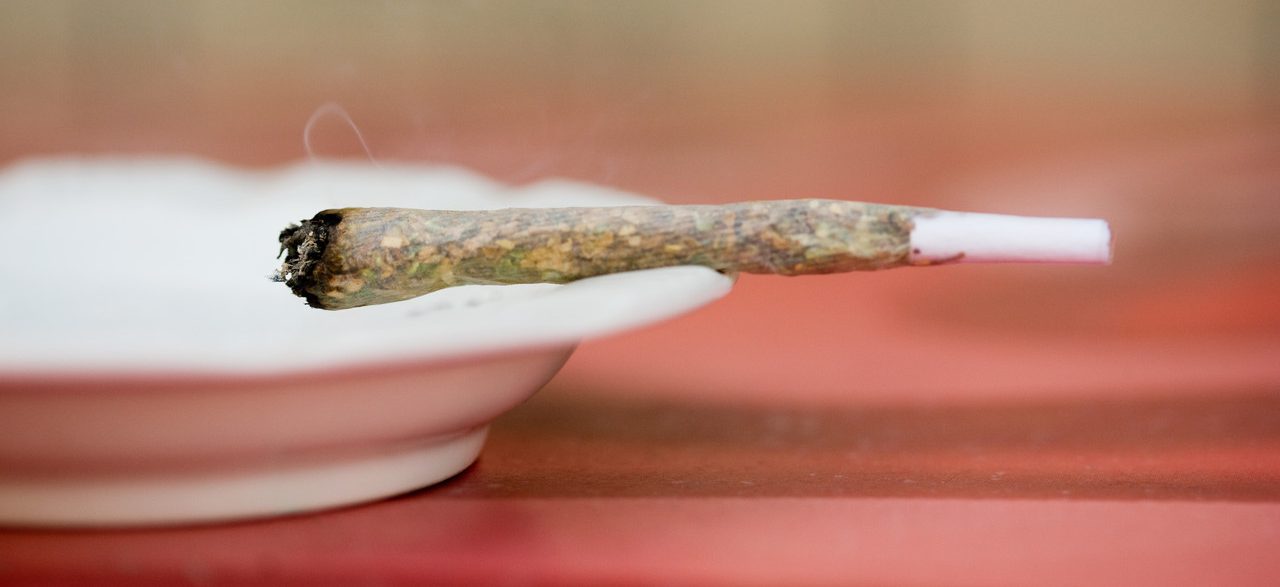Are Fewer Opioid-related Deaths One Benefit of Medical Marijuana?

If there's a benefit of medical marijuana, it may be that using pot for pain can save lives.
The nation’s growing acceptance of using marijuana as medicine is, like all big changes, an experiment.
On Election Day in 2016, four states passed laws in favor of medical marijuana, which means that it will soon be legal with a prescription in more than half of all states. If the trend holds, the new laws might help fight the opioid epidemic. Compared to the rest of the nation, in the decade beginning in 1999, states with medical marijuana laws had 24.8 percent fewer deaths related to opioids on average each year, compared to the rest of the nation, according to a study published in the prestigious journal JAMA Internal Medicine. The pattern of fewer deaths rises to nearly 34 percent in the fifth year after a new law goes into effect, the researchers concluded.
YOU MIGHT ALSO LIKE: What Your Kids Need to Hear About Marijuana
The debate about the benefit of medical marijuana and making prescription pot legal often focuses on how the laws will affect teenagers who aren’t sick. Parents have reason to fear that marijuana will hurt their children. However, the evidence as of 2011 in another study was that medical marijuana laws in the 17 states studied didn’t measurably affect how much teens smoked, at least based on what they told the researchers. In one state that didn’t permit medical use, teens said they were smoking more. In Colorado, the portion of high schoolers who report that they have tried or regularly smoke pot for fun has dropped since adult recreational use became legal in 2009. That’s true around the country: Other research has found a nationwide drop in teen pot-smoking of almost 25 percent between 2002 and 2013, again based on survey data.
Meanwhile, the opioid epidemic has been taking a huge toll. According to the Centers for Disease Control and Prevention (CDC), about a fifth of all adults who see a doctor complaining about pain unrelated to cancer get an opioid prescription, and prescriptions had been going up steadily. In August 2016, the Surgeon General Vivek H. Murphy, MD, wrote an urgent request to doctors to reconsider their practices and help educate the public about addiction, noting: “Since 1999, opioid overdose deaths have quadrupled and opioid prescriptions have increased markedly — almost enough for every adult in America to have a bottle of pills. Yet the amount of pain reported by Americans has not changed. Now, nearly two million people in America have a prescription opioid use disorder, contributing to increased heroin use and the spread of HIV and hepatitis C.” The CDC estimates that nearly half a million Americans are rushed to emergency departments for the misuse or abuse of these drugs each year, and tens of thousands die from overdoses.
This is even sadder if we consider the fact that long-term prescriptions for opioid drugs don’t work well for chronic non-cancer pain, helping only about 30 percent of patients.
There are many alternatives to opioids. In states with medical marijuana laws, doctors have found one benefit of medical marijuana is that it’s especially helpful for people with nerve pain who don’t get enough relief from opioids or nerve blocks, says Thomas Strouse, MD, a palliative care physician and medical director of the Stewart and Lynda Resnick Neuropsychiatric Hospital at the University of California in Los Angeles. California passed a medical marijuana law in 1996. Marijuana is also popular as an alternative to drugs for muscle spasms and seizures, some research has found. And it may increasingly become an alternative for other problems.
In a study that analyzed Medicare data from states that had passed medical marijuana laws, researchers saw drops in prescriptions mainly for pain, but also for sleep and anxiety medications.
Around the world, attitudes are shifting: Germany’s Parliament voted unanimously to legalize marijuana for medical purposes: anyone who has a prescription will be able to buy a product at a local pharmacy. Doctors can prescribe it for epilepsy, multiple sclerosis, chronic pain, or nausea associated with chemotherapy.
Canada, with an already established nationwide medical marijuana program, will legalize recreational use later this year.
If you have a chronic pain problem, talk to your doctor about all your legal options. It is important to understand that even if your doctor writes you a note, saying that marijuana could help relieve your pain or other medical issue, when you buy marijuana at a store you get something more like a supplement than a prescription drug. A prescription drug is a regulated, standardized product, approved by the Food and Drug Administration, where experts carefully evaluate whether it is effective for a particular problem, based on high-quality research. That’s not true of marijuana or supplements you might try for your pain. In the future, we may see prescription drugs that work on the brain receptors affected by the cannabis plant. That day hasn’t yet come.
You also might have a candid talk with your doctor about whether you have the potential to become dependent on opioids or marijuana. Many people use opioids safely, just as many people use marijuana in responsible ways — and others don’t. Ask yourself hard questions about your record with recreational drugs. Have you ever driven when you couldn’t pass a breathalyzer test? Do you smoke cigarettes? Addiction may have biological heritable underpinnings. Is your family full of over-drinkers, smokers, and binge eaters? It’s also true that people are more vulnerable at particular times in their lives. When you’re basically happy or feel in charge of your emotions, you’re less likely to let a drug interfere with your life. Be very careful about how you use “substances” of any kind when you’re depressed and angry.
Updated:
March 31, 2020
Reviewed By:
Christopher Nystuen, MD, MBA